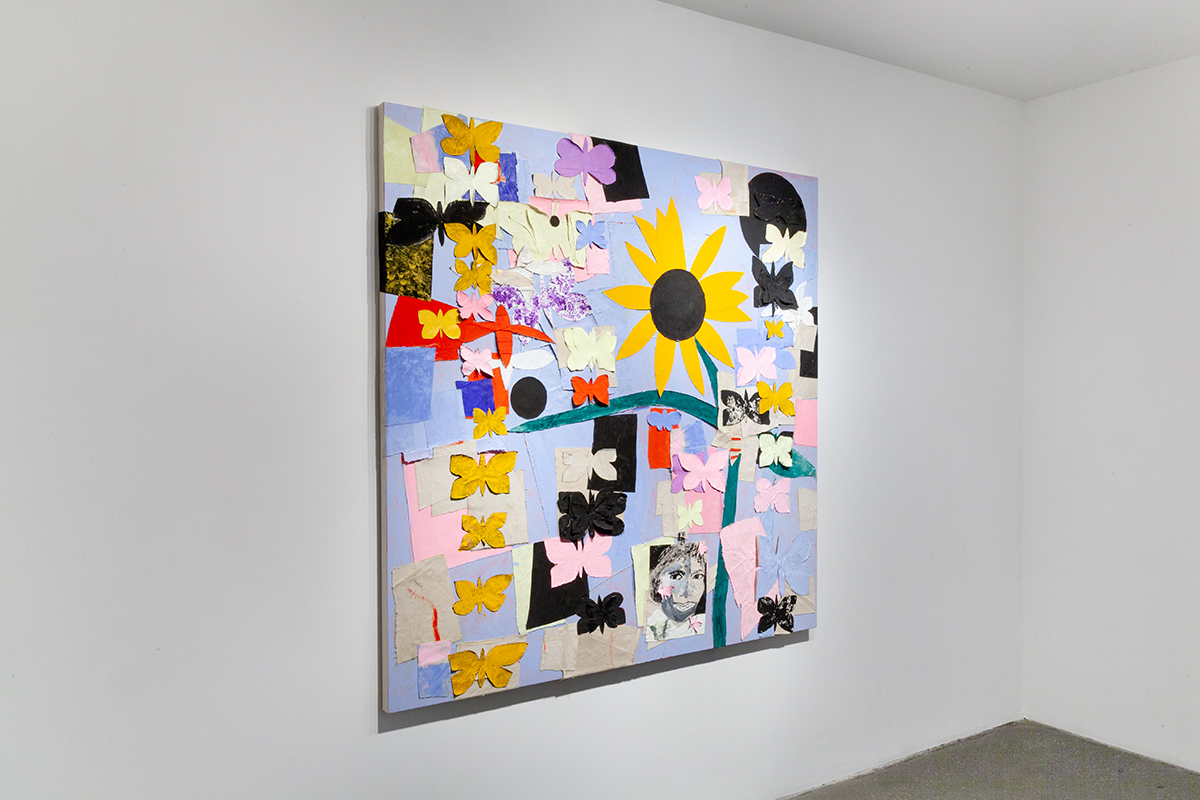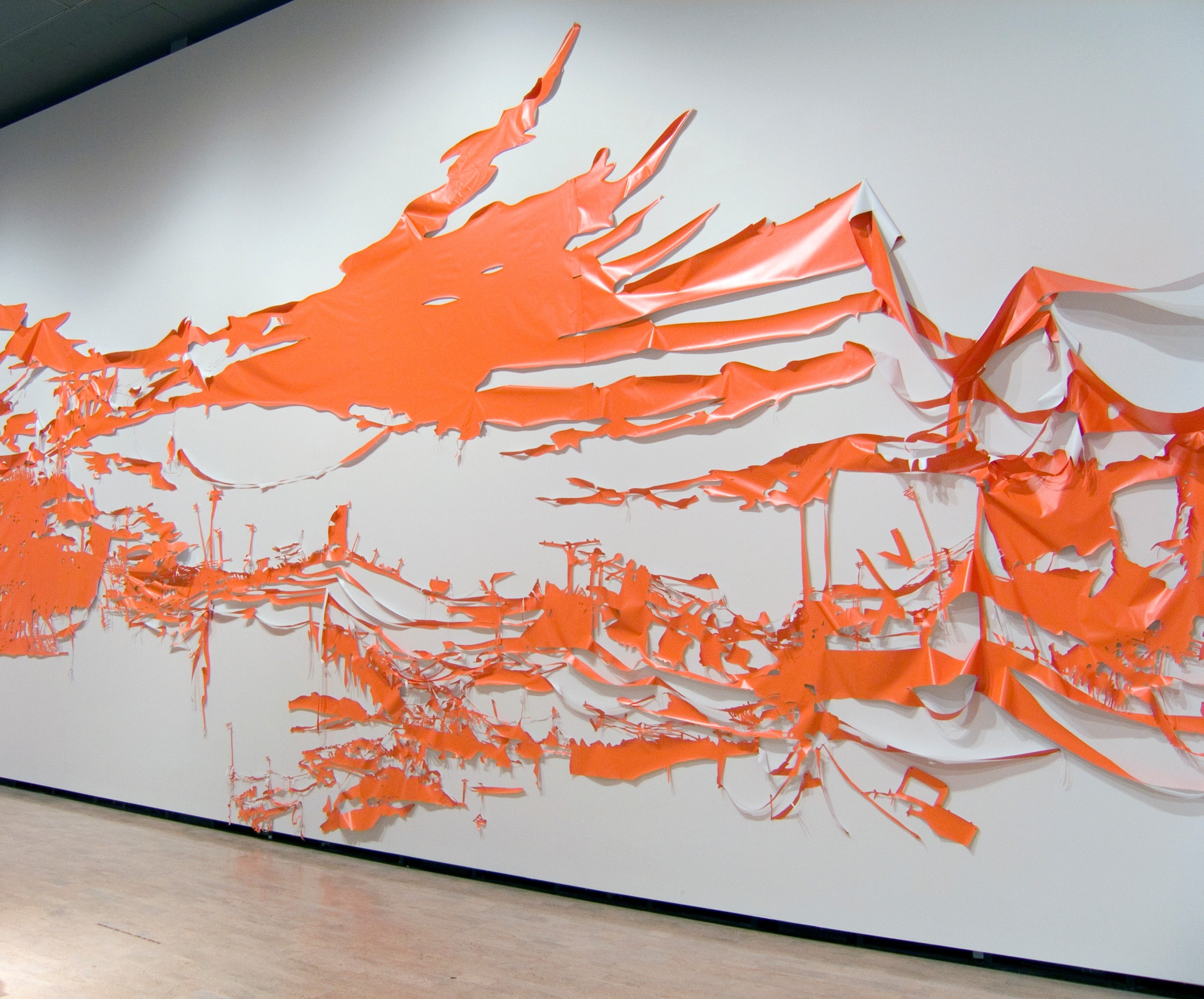
22.05.19 - The Art Museum presents the 2019 Master of Visual Studies, Curatorial Studies graduating projects
image above: Mathias Jud and Christoph Wachter, Can You Hear Me?, 2014. Courtesy Wachter & Jud.
This summer the Art Museum at the University of Toronto is proud to present the graduating projects of the 2019 MVS Curatorial Studies program students, Lillian O’Brien Davis, Pegah Vaezi and Kate Whiteway. The three distinct projects explore themes ranging from activism and ethics on the internet to materiality and cultural interconnectivity in contemporary art in diverse local contexts.
What do we mean when we say ‘content moderation’? is an interdisciplinary symposium organized by Pegah Vaezi addressing urgent concerns regarding control of digital space within and beyond the art and creative communities in Canada and internationally. The symposium will explore three approaches as examples of artist- and tech-involved activism against two main and interconnected systems of oppression: artists as developers/co-developers of the Web’s Infrastructure; artistic “gestures” as activism against online censorship and surveillance; and storytelling — changing narratives through technology and science fiction.
The two-day event will take place on May 25 and 26, 2019 at Hart House and features Jillian C. York [Berlin] (Electronic Frontier Foundation), Skawennati [Montreal] (Aboriginal Territories in Cyberspace), Mathias Jud, Berlin (Can you hear me?), Sarah Friend, Toronto/Berlin (Our Networks), Jonathan Penney, Halifax (Citizen Lab, Dalhousie University), Garry Ing, Toronto (OCAD University, Our Networks), Dante Sanchez, Toronto (Toronto Mesh), Connor Turland, Toronto (Holochain) and Dawn Walker, Toronto (University of Toronto).

Sojourner Truth Parsons,I know for sure nobody should be poor (for everyone who died in May), 2018, Acrylic, flashe, archival glue and canvas on canvas, 60 x 60”, Courtesy of Daniel Faria Gallery
In the exhibition Common Place: Common-Place (June 5 – July 27), curated by Lillian O’Brien Davis, the artworks by Patrick Cruz, Erika DeFreitas, Catherine Telford Keogh, Walter Scott, and Sojourner Truth Parsons engage with notions of a common place through a variety of entry points by their works’ conceptual and material presences. Common Place: Common-Place considers the state of constant exchange in contemporary culture and its generative possibilities.
Catherine Telford Keogh’s sculptures contain data from previous moments; objects that are in and around us, deposits that slowly shift and change state over time, reacting in relation to each other. Erika DeFreitas’ video depicts a figure in constant movement, resisting a settled or permanent position along with the sound generated by her presence that permeates the space. Patrick Cruz’s wall painting engages with the gallery as ‘place’, a site for experimentation where presence is asserted by resisting the muting power of the white walls. Walter Scott’s humanoid sculptures extend into the gallery, the vulnerability and humour associated with their forms is a variation of representation, proposing alternate possibilities of perception. Sojourner Truth Parsons’ paintings work through the cacophony of existence, acting as memorials or visual representations of an emotional process, each painting becoming a site of exchange with and in response to the activity of the world.

Dagmara Genda, Limp Landscape, 2010, cut vinyl. Collection of Saskatchewan Arts Board. Image courtesy of the Mendel Art Gallery
In & Out of Saskatchewan (June 5 – July 27) is an exhibition about Saskatchewan in Toronto curated by Kate Whiteway. Selected artists’ works illuminate the conditions by which art from “peripheral” places is legitimized by travelling to and from “centres.”
Works by artists Pat Adams, Ryan Arnott, Tammi Campbell, Dagmara Genda, Roy Kiyooka, Kenneth Lochhead, William Perehudoff, Edward Poitras, Jon Vaughn, Theodore Wan offer alternate views on traditions associated with the Prairies, namely colour field abstraction, landscape painting and photography, weaving and ceramics. The exhibition spans several decades, bookmarked by the internationalism of the Emma Lake Artists’ Workshops in the early 1960s and the opening of the public art museum, Remai Modern, in 2017.
These two institutions invited an international audience into the local context of Saskatchewan, shaping who and what is considered central to the imported and exported narratives of art in the province. Drawing from the collections of the University of Toronto and the Saskatchewan Arts Board, and including works sent directly from artists and mailed through the postal system, In & Out of Saskatchewan activates networks through which art travels. It questions what we might know about “Saskatchewan art,” and highlights the material and political conditions of the production and presentation of art elsewhere, here. The exhibition posits art practices that are not defined by their distance from the “centre,” but instead by correspondence, agency and travel.
These projects are produced as part of the requirements for the MVS degree in Curatorial Studies at the John H. Daniels Faculty of Architecture, Landscape and Design, University of Toronto
Common Place: Common-Place
June 5 – July 27, 2019
University of Toronto Art Centre
In & Out of Saskatchewan
June 5 – July 27, 2019
University of Toronto Art Centre
Opening Reception
Wednesday, June 5, 2019, 6-8pm
Drop-In Tours
Tuesdays, 2pm
About the Art Museum at the University of Toronto
The Art Museum is comprised of the Justina M. Barnicke Gallery (Hart House) and the University of Toronto Art Centre (University College). Located just a few steps apart, the two galleries were federated in 2014 and began operating under a new visual identity as the Art Museum at the University of Toronto, one of the largest gallery spaces for visual art exhibitions and programming in Toronto.
Building on the two galleries’ distinguished histories, the Art Museum originates and organizes an intensive year-round program of exhibitions and events that foster—at a local, regional, and international level—innovative research, interdisciplinary scholarship, and knowledge of art and its histories befitting Canada’s leading university and the country’s largest city.
About the Daniels Faculty's Master of Visual Studies, Curatorial Studies Program
Initiated in 2008, the Curatorial Studies stream in the MVS program at the University of Toronto is currently in its tenth year. Embedded within a rich environment of study, teaching assistantships, internships and mentorship within the internationally renowned Daniels Faculty and the Art Museum at the University of Toronto, students immerse in recent developments in the visual arts, theory, and critical writing in an interdisciplinary context to support their research interests and curatorial engagement.
The program focuses on the presentational challenges arising from the diverse and complex modes of contemporary art — from material and historical artefacts to installation, from performance to image, text, sound, and digital media — within the broader context of contemporary global culture. Significantly, the program offers students the opportunity to produce their own Graduating Exhibition for public presentation within the professional context and support of the Art Museum on the downtown campus of the University of Toronto, and at the centre of Canada’s largest city.
The highly respected degree affords students access to a sustained professional network and mentorships. With an outstanding history of accomplishments of Graduating students’ exhibitions, graduates of our program continually achieve successful curatorial careers and institutional positions in Canada and internationally. They include directorial, curatorial and related positions at the Art Gallery of Ontario, the Vancouver Art Gallery, the Power Plant, the Art Gallery of York University, the Art Gallery of Southwestern Manitoba, the Esker Foundation and many others art institutions across Canada and around the world.
Our Supporters
The MVS Curatorial Studies Program gratefully acknowledges the generous support of Reesa Greenberg through the Reesa Greenberg Curatorial Studies Awards. The Art Museum gratefully acknowledges operating support from the Canada Council for the Arts and the Ontario Arts Council, with additional project support from TD Insurance.

